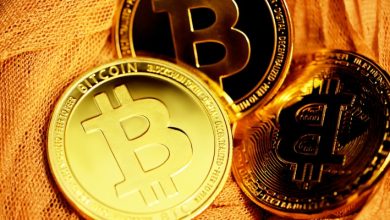What Are Wrapped Tokens? A Beginner’s Guide

- Understanding the concept of wrapped tokens
- The role of wrapped tokens in blockchain ecosystems
- How wrapped tokens bring liquidity to decentralized exchanges
- Comparing wrapped tokens to traditional tokens
- Popular use cases for wrapped tokens
- Key considerations when using wrapped tokens
Understanding the concept of wrapped tokens
Wrapped tokens are a concept in the cryptocurrency world that involves representing digital assets on a different blockchain. Essentially, wrapped tokens are tokens that are pegged to the value of another asset, usually a cryptocurrency, to enable its use on a different blockchain. This process involves locking the original asset in a smart contract and creating a new token on the other blockchain that represents the value of the locked asset.
One of the main reasons for creating wrapped tokens is to enable cross-chain compatibility and interoperability between different blockchain networks. By wrapping a token from one blockchain and creating a corresponding token on another blockchain, users can access decentralized applications (dApps) and other services that are not available on the original blockchain.
For example, Ethereum-based tokens like ERC-20 tokens can be wrapped and used on the Binance Smart Chain (BSC) or other blockchain networks that support the Ethereum Virtual Machine (EVM). This allows users to access DeFi protocols, decentralized exchanges, and other services that are built on different blockchains.
Overall, wrapped tokens play a crucial role in expanding the utility and usability of digital assets across different blockchain ecosystems. They provide users with more flexibility and options for interacting with various decentralized applications and services in the ever-evolving cryptocurrency space.
The role of wrapped tokens in blockchain ecosystems
Wrapped tokens play a crucial role in blockchain ecosystems by allowing assets from one blockchain to be used on another. This interoperability is essential for decentralized applications (dApps) that rely on multiple blockchains. When a token is wrapped, it is pegged to the value of the underlying asset, ensuring that users can seamlessly transfer and use their assets across different blockchains.
How wrapped tokens bring liquidity to decentralized exchanges
Wrapped tokens play a crucial role in bringing liquidity to decentralized exchanges. By wrapping tokens from one blockchain to make them compatible with another blockchain, users can trade these tokens on decentralized exchanges that do not support the original tokens. This process enables users to access a wider range of trading options and increases liquidity on these platforms.
When users wrap their tokens, they lock the original tokens in a smart contract, and an equivalent amount of wrapped tokens is minted on the target blockchain. This ensures that the wrapped tokens are backed by the original tokens, providing security and trust to users. The wrapped tokens can then be freely traded on decentralized exchanges, allowing users to participate in various DeFi protocols and take advantage of different opportunities in the crypto space.
One of the key benefits of wrapped tokens is their ability to bridge liquidity across different blockchains. By wrapping tokens, users can bring assets from one blockchain to another, creating new trading pairs and increasing the overall liquidity of decentralized exchanges. This liquidity not only benefits individual traders but also enhances the efficiency and stability of the entire DeFi ecosystem.
Overall, wrapped tokens are essential for expanding the functionality and usability of decentralized exchanges. By enabling cross-chain compatibility and increasing liquidity, wrapped tokens empower users to engage more freely in decentralized finance and access a broader range of investment opportunities in the crypto market.
Comparing wrapped tokens to traditional tokens
When comparing **wrapped tokens** to traditional tokens, there are several key differences to consider. Wrapped tokens are essentially representations of other cryptocurrencies on a different blockchain, providing increased liquidity and interoperability. Traditional tokens, on the other hand, are native to their respective blockchains and may not be as easily exchanged across different platforms.
One of the main advantages of wrapped tokens is their ability to be traded on decentralized exchanges (DEXs) that support multiple blockchains. This opens up a world of possibilities for investors looking to diversify their portfolios without being limited by the constraints of a single blockchain. Traditional tokens, while still valuable, may not offer the same level of flexibility in terms of trading options.
In addition, wrapped tokens can also be used in decentralized finance (DeFi) applications, allowing users to take advantage of a wide range of financial services without having to worry about the limitations of a single blockchain. This can include lending, borrowing, and trading assets in a seamless and efficient manner. Traditional tokens may not be as easily integrated into DeFi platforms, potentially limiting their utility in this rapidly growing sector.
Overall, the comparison between **wrapped tokens** and traditional tokens highlights the importance of flexibility and interoperability in the ever-evolving world of blockchain technology. While traditional tokens have their own unique advantages, wrapped tokens offer a new level of versatility that can benefit investors and users alike. Whether you’re looking to trade across different blockchains or participate in DeFi applications, **wrapped tokens** provide a valuable alternative to traditional tokens.
Popular use cases for wrapped tokens
Wrapped tokens have become increasingly popular in the world of cryptocurrency due to their versatility and ability to bridge different blockchain ecosystems. Some of the most common use cases for wrapped tokens include:
- Facilitating cross-chain transactions: Wrapped tokens allow users to transfer assets between different blockchains seamlessly, enabling interoperability and expanding the reach of decentralized finance (DeFi) applications.
- Enhancing liquidity: By wrapping tokens from one blockchain and using them on another, liquidity can be increased across multiple platforms, leading to more efficient trading and lower slippage.
- Enabling access to decentralized exchanges (DEXs): Wrapped tokens make it easier for users to access DEXs that operate on different blockchains, providing more options for trading and investment opportunities.
- Supporting asset tokenization: Wrapped tokens can represent real-world assets such as stocks, commodities, or even other cryptocurrencies, allowing for easier trading and investment in these assets on various blockchain networks.
- Providing collateral for loans: Some DeFi platforms accept wrapped tokens as collateral for loans, enabling users to borrow funds against their digital assets without having to sell them.
Overall, wrapped tokens offer a flexible and efficient way to interact with different blockchain networks and unlock new possibilities for decentralized finance and asset management.
Key considerations when using wrapped tokens
When using wrapped tokens, there are several key considerations to keep in mind to ensure a smooth and successful experience. One important factor to consider is the security of the wrapped token platform you are using. It is crucial to choose a platform that has a strong track record of security and has implemented measures to protect users’ funds.
Another important consideration is the liquidity of the wrapped token you are using. It is essential to ensure that there is enough liquidity in the market to facilitate trading and transactions effectively. Additionally, you should consider the fees associated with using wrapped tokens. Some platforms may charge fees for wrapping and unwrapping tokens, so it is essential to factor these costs into your decision-making process.
Furthermore, you should be aware of the regulatory environment surrounding wrapped tokens. Regulations can vary by jurisdiction, so it is crucial to understand the legal implications of using wrapped tokens in your country. Lastly, you should consider the interoperability of the wrapped token with other platforms and protocols. Ensuring that the token can be easily transferred and used across different ecosystems will enhance its utility and value. By keeping these key considerations in mind, you can make informed decisions when using wrapped tokens.



